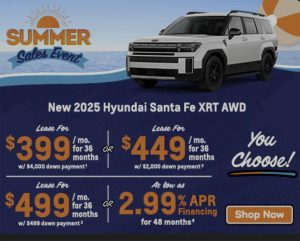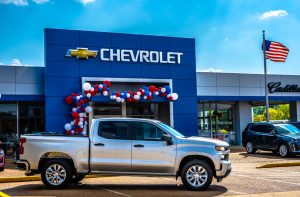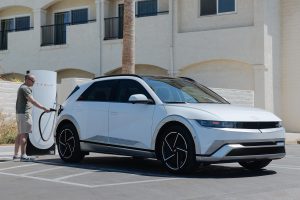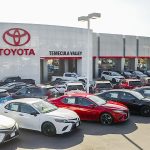At a time when new vehicle prices are reaching record levels and interest rates remain stubbornly high, despite the recent rate cut by the Federal Reserve, affordability is becoming a critical issue that could send U.S. auto sales into a tailspin in the months ahead.

Consumers are facing increased price pressure and its unclear the Fed rate cut will offer any relief.
Purchasing a new vehicle remains a challenge for American who are taking out bigger loans for longer periods, according to a new survey by the car-buying service Edmunds, and it suggests that the recent rate cut by the Federal Reserve hasn’t trickled down to automotive buyers.
The data collected by Edmunds suggested that buyers have less cash on hand and are being forced to stretch out what are historically steep monthly payments for longer periods.
“In Q3, affordability in the new-car market remained stretched, with buyers putting less money down, financing more and relying on longer terms to keep monthly costs in check,” said Jessica Caldwell, Edmunds’ head of insights.
Numbers tell the story
New car prices have been hovering close to the $50,000 mark all year, and industry analysts warn that they could set a new record as automakers begin passing on the higher costs they face as a result of Trump tariffs on imported autos and auto parts. Even domestic models could see price hikes of $2,000 or more, various studies warn, due to the general use of foreign-made components.
This is occurring even as inflation strains consumer budgets on everything from food to housing costs, leaving them with less cash in hand when they purchase a vehicle. The average down payment for new-car purchases dropped to $6,020 in the third quarter, according to Edmunds, the lowest level since the fourth quarter of 2021 in the aftermath of the pandemic. That was down from $6,433 during the second quarter and $6,619 in the third quarter of 2024.
But the share of buyers committing to monthly payments of $1,000 or more accounted for 19.1% of all financed new-car transactions in the third quarter, just short of the record set last quarter at 19.3%. For used vehicles, $1,000-plus monthly payments hit a record high of 6.1%, up from 5.6% in Q2.
Loans get longer
Edmunds analysts also report that 84-month or longer loans made up 22% of financed new-car purchases in the third quarter, which is down from 22.4% last quarter and up from 18.5% in the same period 2024.
At the same time, the average amount financed for new vehicle purchases continues to climb rising to $42,647 in the third quarter, up from $42,388 in the second quarter 2025 and $40,713 in third-quarter 2024, according to Edmunds.
The average annual percentage rate (APR) for loans tied to the purchase of a new vehicle held at 7% in the third quarter, despite the Fed rate cut, marking the third straight quarter this figure was at or above 7%.
Edmunds analysts said that factory-subsidized promotional financing was limited in the was limited during the third quarter, only 3.4% of loans carrying a widely advertised 0% rate. And only 18.3% of loans carried rates below 4%. By contrast, 71.6% of loans carried an APR of 5% or higher, and 13.8% were at an APR of 10% or higher.
More Auto News
- Nissan Kills Versa Manual, America’s Most Affordable Vehicle – Blames Trump Tariffs
- Consumers Weary of High Prices, Interest Rates
- Federal Reserve Cut May Not Help Car Buyers
Impact of rate cut negligible
Edmunds analysts note that the Fed’s late September rate cut came at the end of the quarter and thus did not have a significant effect in Q3. Additionally, consumers loans for cars depend on the bond market, where U.S. securities are becoming more expensive.
They noted that the annual model year sell-down is well underway, with new 2026 vehicles accounting for roughly 38% of on-lot inventory at the end of September. However, average interest rates and discounts between incoming and outgoing model years were pretty similar: The average APR was 6.9% for 2025 model year vehicles compared to 7.1% for 2026 models, and the average discount from MSRP was $2,119 for 2025 models compared to $1,431 for newer vehicles.
Cox Automotive Chief Economist Jonathan Smoke said, “2025 has clearly resulted in a much stronger economy and auto market through the first three quarters, and while we enter the fourth quarter with the proverbial headlights off just as the sun has set and the road ahead looks a bit trickier”








0 Comments